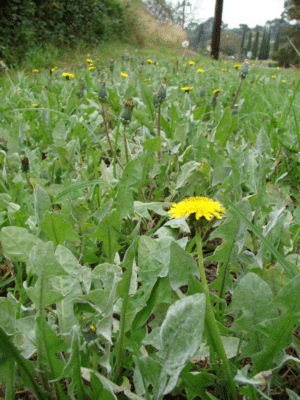Dandelion Greens-Unlocking the Potency: Culinary Delights and Medicinal Marvels"
Known in Hindi as (सिंहपर्णी ) Singhparni or (कुकरौंधा) Kukurunda and in Tamil Kāttumullaṅki (after trying a lot I came to find out the Tamil Name but it may not be correct but for time being let me assume name it as kattumullanki, if you got a real name please let me know through my mail)
Table of Contents
Def. & Origin
Dandelion greens refer to the leaves of the dandelion plant, scientifically known as Taraxacum officinale, and colloquially as Swedish mums. Belonging to the Asteraceae (Sunflower) family, these greens are considered a weed in the United States, although they are remarkably nutrient-dense. The mature leaves boast a distinctly bitter flavor, while younger leaves offer a milder taste.
Despite their classification as a weed, its greens are edible and widely utilized in culinary applications, particularly in salads and the production of dandelion wine. Additionally, they find their way into herbal teas and supplements, functioning as a natural remedy. These applications aim to support blood sugar management and enhance skin, liver, and heart health, owing to the rich nutritional profile of dandelion greens.
Botanical marvels found across six continents have served as a culinary resource since ancient times. While these plants are distributed globally, the varieties cultivated for commercial consumption primarily originate from Eurasia and North America. As per their geographical roots, dandelions are native to Europe, extending eastward to Siberia, and have successfully naturalized across the Indian subcontinent.
As perennial plants, it exhibit a unique characteristic wherein their leaves regenerate if the taproot remains undisturbed. This resilience contributes to their sustained availability for harvest. Beyond their culinary uses, dandelions have a rich history of medicinal applications, further highlighting their significance.

Nutrient Profile
Dandelion greens are packed with essential nutrients and offer a range of health benefits:-
Vitamins: They are rich in vitamins, particularly vitamin K, which is essential for blood clotting and bone health. They also contain vitamins A, C, and various B vitamins.
Minerals: Its greens provide important minerals such as calcium for bone health, iron for oxygen transport, potassium for regulating blood pressure, and magnesium for various bodily functions.
Antioxidants: Leaf greens contain antioxidants, including beta-carotene and flavonoids, which help protect cells from oxidative damage.
Fiber: They are a good source of dietary fiber, which supports digestive health and contributes to a feeling of fullness.
Culinary Significance: Their leaves have a slightly bitter taste, which can be an acquired taste for some. However, their bitterness can be balanced and complemented with other ingredients in various recipes. Dandelion greens can be used in a variety of dishes, including salads, sautés, soups, and smoothies.

Images by Forest Starr & Kim Starr
Health Benefits
Dandelion greens offer several potential health benefits:
Digestive Health: The fiber in dandelion greens supports healthy digestion and may alleviate constipation.
Liver Health: Some traditional herbal medicine practices use dandelion as a liver tonic and detoxifier.
Bone Health: The calcium content in its greens promotes strong and healthy bones.
Blood Health: Dandelion greens are rich in iron, which helps prevent iron-deficiency anemia.
Antioxidant Protection: The antioxidants in greens help combat oxidative stress and reduce the risk of chronic diseases.
Weight Management: Dietary fiber promotes a sense of fullness, potentially aiding in weight management.
Diuretic Properties: Greens may have mild diuretic properties, promoting fluid balance in the body.
